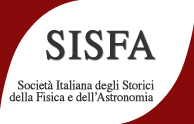Speaker
Description
This presentation explores the role of analogical reasoning in astronomy and cosmology, emphasizing how analogies have shaped scientific discovery, theory development, and communication. It examines key historical examples such as Galileo’s analogy between the Moon and the Earth, Newton’s gravitational analogy, and visual models like Eddington’s expanding balloon. Special attention is given to Gamow’s stellar analogy for explaining primordial helium, as well as to Penrose and Hawking’s use of analogies between black hole singularities and the origin of the universe. These cases demonstrate how analogies not only function as explanatory tools but also serve as catalysts for conceptual breakthroughs.
In addition, this presentation highlights the dialogue between history, science education, and public engagement. It addresses the impact of visual analogies, like Eddington’s balloon analogy, in both advancing scientific understanding and engaging non-expert audiences. These visual models have played an important role in making complex cosmological concepts more accessible and effective in teaching.

